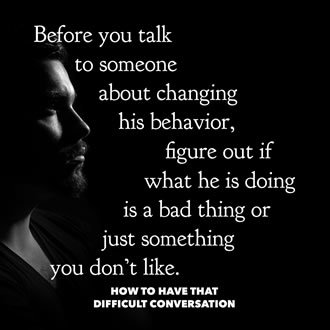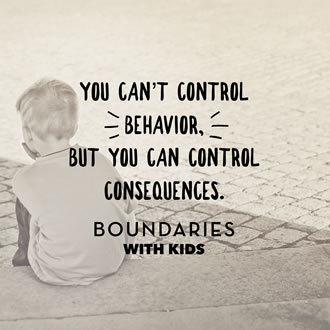Henry Cloud's Blog, page 11
August 17, 2018
A Biblical Perspective of Good and Bad
 By Dr. Henry Cloud
By Dr. Henry Cloud
The world around us is good and bad. The people around us are good and bad. We are good and bad.
Our natural tendency is to try to resolve the problem of good and evil by keeping the good and the bad separated. We want, by nature, to experience the good me, the good other, and the good world as “all good.” To do this, we see the bad me, the bad other, and the bad world as “all bad.”
This creates a split in our experience of ourselves, others, and the world around us—a split that is not based on reality and cannot stand the test of time and real life.
This splitting results in an inability to tolerate badness, weakness, and failure in ourselves and others. It leads to two basic problems: sometimes we deny the existence of bad; at other times, we deny the existence of good. We feel like we are all bad when we fail, or we think we are all good when we are doing well. In addition, we blame and punish others for failing to be the all-good person we want them to be. At other times, we deny the real badness they exhibit and end up with an unreal relationship with them that ultimately fails.
In the world around us, we require perfection, and we devalue any church, group, or job that fails our expectations. Either we withdraw from the church, group, or job, only to move to another imperfect and disappointing situation, or we idealize situations in a way that blinds us to their bad points. In short, if we do not have the ability to tolerate and deal with the simultaneous existence of good and bad, we cannot successfully deal with and live in this world, for the world and we are precisely that: good and bad.
It was not always this way. There was a time on planet Earth when everything was “all good.” God had painted a picture on the canvas of reality, and the reality of his picture was perfection. The creation, including humans, was without blemish. We were without sin.
We can sometimes move close to seeing perfection. We can sometimes see it as we gaze at a beautiful sunset. It is evident in some people’s physical beauty. Some musical performances challenge us to find a mistake. Some athletes surprise us with perfect performances of grace and beauty. Moments of intimacy between lovers bring heaven close to earth.
It is at times like these that we have little problem imagining an ideal world. We can get lost in the fantasy of what a creation must have been like without evil. It was for this world that we were created. We were never made to live where we live now; that was a mistake. We have been delivered to the wrong address. God created us for perfection, and we find ourselves living somewhere else.
We were not prepared to live in an imperfect world. We were not made to deal with the effects of the fall. There were to be no cavities in our teeth, no thorns and thistles puncturing our soft feet. We were not made to have to defend ourselves against each other; our spirits are much too tender to live in a world of hurtful people. We were made for perfect relationship with perfect people; instead, the people with whom we find ourselves invariably hurt us. They lie or are unfaithful; sometimes they are just mean.
We were not prepared to be imperfect. We don’t have enough grace inside to anesthetize us against the pain of our own badness. It is horrible enough to feel sin; but the guilt of the sin is even worse. We feel hatred and separation instead of love and connection; we feel others’ envy instead of their appreciation and gratitude; we feel sad and angry instead of joyous; we panic and worry instead of feeling safe and secure; we feel shame and self-hatred instead of love and self-confidence; and finally, we feel utter fear and terror of God, instead of overwhelming awe and love. All of these feelings touch on issues of good and bad; to be emotionally and spiritually successful, we must be able to deal with them. If we can’t coexist with good and bad, we will have a hard time living in this world.
When we swing back and forth from seeing things as either all good or all bad, we can’t have a consistent relationship with ourselves, others, or the world around us. People will sometimes go from friend to friend, spouse to spouse, church to church, or job to job. For a while they think everything is okay, but as soon as badness appears, they can’t deal with it. They demand perfection; whatever is not perfect is “all bad” and therefore rejected. They are riding a roller coaster.
Perhaps you have a relationship where you thought everything was okay, and then you didn’t call home when you were going to be late. Your partner treated you like you had leprosy. This is an example of someone who can’t deal with badness or imperfection in others.
Or, maybe you thought you were doing pretty well in golf, and then played a rotten game and felt enormous hatred for yourself. It felt as if you were a total failure, all bad. Or, maybe you were excited about buying the car of your dreams. And then, it got dented, and lost its perfection. If it’s not perfect, it’s all bad. Or, you were preparing that special welcoming meal for your new neighbors. The cake falls, and “it ruins the whole evening.”
These are all problems of sorting out issues of good and bad. If we are to negotiate life very well, we must find a way to live in a world that has both.
________
Taken from Changes That Heal by Dr. Henry Cloud. Click here to learn more about this bestselling book.
The post A Biblical Perspective of Good and Bad appeared first on Boundaries Books.
August 14, 2018
Boundaries and The Beverly Hillbillies
 When setting boundaries with someone, it’s important to differentiate between what you prefer and what’s actually wrong. Before you talk to someone about changing his behavior, figure out if what he is doing is really a “bad” thing or just something you don’t like.
When setting boundaries with someone, it’s important to differentiate between what you prefer and what’s actually wrong. Before you talk to someone about changing his behavior, figure out if what he is doing is really a “bad” thing or just something you don’t like.
I (Dr. Cloud) refer to this distinction as a test I like to call “Would God and the Beverly Hillbillies Agree?” Here’s what I mean: Some things are just things you don’t like and want someone to change, but that person is not really doing anything wrong. Depending on where you come from, it may be acceptable or not.
For example, what is fine to Jed Clampett, the funny patriarch on the old Beverly Hillbillies television show, might be very distasteful to you. He was the kind of person who would keep a raccoon inside his house and stock his swimming pool with catfish. If your spouse did that, it would really bug you. It is all a matter of taste.
In contrast, mistreating people or not taking responsibility for one’s actions or morals, both God and even most hillbillies would say is wrong. There is little disagreement about those behaviors.
Before you proceed with setting boundaries, figure out if what you are bugged about is in the “preference” category or in the “wrong for civilized humans” category. If it is just your preference, realize that you don’t have a “higher moral ground” from which to speak. Instead, you are really asking for a favor.
Failure to make this distinction commonly happens in a relationship in which one person is more structured than the other. One may be more orderly, time-conscious, budgeted, or organized than the other. The less structured one is looser and okay with things being more “unraveled.”
Typically, the structured one feels that her way is the “right” way and approaches the conversation in that fashion. This is usually a disaster. Instead of demanding better behavior from her spouse, what she should be doing is asking for a favor to negotiate a compromise—just asking the other person to come her way a bit.
Remember, ask as though you don’t have a “right” to what you are asking for. Preserve the freedom of the other person to say no or to disagree; and do not judge. Then, you will have a greater chance of getting what you want. As Jed Clampett used to say, “You’ll be happier than an itchy pig rubbing against a rail fence.”
________
Setting healthy boundaries improves relationships and helps solve important problems. But, many of us don’t know how to have difficult conversations and see confrontation as scary or adversarial. If you feel hesitant about establishing limits with another person, get solutions in the book, How to Have That Difficult Conversation. Dr. Henry Cloud and Dr. John Townsend will help you:
Understand essentials of a good boundary-setting conversation.
Prepare effectively for an uncomfortable or awkward conversation.
Tell other people what you want, stop bad behavior, and deal with counterattacks.
Click here to read a sample chapter and purchase today.
________
Get The 10 Laws of Boundaries eBook when you subscribe to the Boundaries Weekly email newsletter. Learn More
The post Boundaries and The Beverly Hillbillies appeared first on Boundaries Books.
August 3, 2018
The #1 Reason Why People Hate Change
 One of the most important boundaries that people have to establish is against the tendency to put off changes that they know need to be made. If you think about it, much “waiting” and putting off changes has nothing to do with “getting more information,” or “waiting until we get finished with a, b, or c.” Obviously, it’s essential to gather data and do analysis, but many people allow too much lag time between knowing and doing.
One of the most important boundaries that people have to establish is against the tendency to put off changes that they know need to be made. If you think about it, much “waiting” and putting off changes has nothing to do with “getting more information,” or “waiting until we get finished with a, b, or c.” Obviously, it’s essential to gather data and do analysis, but many people allow too much lag time between knowing and doing.
I (Dr. Cloud) remember once when I had a decision to make regarding a significant investment. I had been reluctant to green light the deal because it was in an area that I was less familiar with than I wanted to be. The truth, however, was that my advisers were experts in this arena, and I really did trust their opinions. Still, I was putting it off. Finally one of them, the lead investor, called me.
“We have to go forward now or it is not going to happen,” he said. “What are you going to do?”
“I want to talk to David first about some more balance sheet issues, and then I will let you know,” I said.
“What specific information do you still need that will help you make the decision?” he asked. “What exactly do you need to know to go ahead? And what are you going to learn that you don’t already know?”
When he put it that way, I realized something. There was no more piece of specific information that I needed. I was just looking for more comfort and there was no information that was ever going to give me that. I had to decide, to trust the smart people, and to eat my discomfort. I had to pull the trigger.
“You are right,” I said. “There is nothing I am going to learn that will materially change anything. I am waiting, but I guess I am not waiting on any ‘thing.’ Let’s do it. I will get the money wired today.”
Look out for this dynamic in yourself by asking: What’s holding me back? Is it lack of information or fear of making a mistake? Put some boundaries around the “need for more information” and the desire for absolute certainty. With most big decisions, risk cannot be entirely eliminated. Deal with it and get moving.
Another resistance to change is the desire to “make sure everyone is on board,” or “we reach consensus,” which is sometimes code for “I want to make sure everyone is going to like it.” Just as it’s essential to get good information, it’s also important to align key people around the proposed change. At the same time, getting absolutely everyone on board may take forever, and making everyone happy with your decision is highly unlikely anyhow.
Sometimes, after everyone has been heard and understood and has been able to have their input considered, you might have to make a decision that all are not happy with. You may even have to ask the people around you to “disagree but commit.” But you cannot wait around for everyone to get happy.
Resistance to change is a fact of life. If you want change to take hold, you must have good boundaries to contain the forces that are working against the effort.
________
Overcome your fear of change and learn why some people get results when others don’t. Get the must-read book for individuals and organizations by Dr. Henry Cloud, Boundaries for Leaders.
Get The 10 Laws of Boundaries eBook when you subscribe to the Boundaries Weekly email newsletter. Learn More
The post The #1 Reason Why People Hate Change appeared first on Boundaries Books.
July 30, 2018
What Biblical Submission in Marriage Really Means
 Whenever I (Dr. Townsend) talk about a wife setting boundaries in marriage, someone asks about the biblical idea of submission. What follows is not a full treatise on submission, but some general issues you should keep in mind.
Whenever I (Dr. Townsend) talk about a wife setting boundaries in marriage, someone asks about the biblical idea of submission. What follows is not a full treatise on submission, but some general issues you should keep in mind.
First, both husbands and wives are supposed to practice submission, not just wives. “Submit to one another out of reverence for Christ” (see Ephesians 5:21). Submission is always the free choice of one party to another. Wives choose to submit to their husbands, and husbands choose to submit to their wives.
Christ’s relationship with the church is a picture of how a husband and wife should relate: “Now as the church submits to Christ, so also wives should submit to their husbands in everything. Husbands, love your wives, just as Christ loved the church and gave himself up for her to make her holy, cleansing her by the washing with water through the word, and to present her to himself as a radiant church, without stain or wrinkle or any other blemish, but holy and blameless” (see Ephesians 5:24–27).
Whenever submission issues are raised, the first question that needs to be asked is, What is the nature of the marital relationship? Is the husband’s relationship with his wife similar to Christ’s relationship with the church? Does she have free choice, or is she a slave “under the law”? Many marital problems arise when a husband tries to keep his wife “under the law,” and she feels all the emotions the Bible promises the law will bring: wrath, guilt, insecurity, and alienation (see Romans 4:15; Galatians 5:4).
Freedom is one issue that needs to be examined; grace is another. Is the husband’s relationship with his wife full of grace and unconditional love? Is she in a position of “no condemnation” as the church is (see Romans 8:1), or does her husband fail to “wash her” of all guilt? Usually husbands who quote Ephesians 5 turn their wives into slaves and condemn them for not submitting. If she incurs wrath or condemnation for not submitting, she and her husband do not have a grace-filled Christian marriage; they have a marriage “under the law.”
Often, in these situations, the husband is trying to get his wife to do something that either is hurtful or takes away her will. Both of these actions are sins against himself. “Husbands ought to love their wives as their own bodies. He who loves his wife loves himself. After all, no one ever hated his own body, but he feeds and cares for it, just as Christ does the church” (see Ephesians 5:28–29).
Given this, the idea of slave-like submission is impossible to hold. Christ never takes away our will or asks us to do something hurtful. He never pushes us past our limits. He never uses us as objects. Christ “gave himself up” for us. He takes care of us as he would his own body.
I have never seen a “submission problem” that did not have a controlling husband at its root. When the wife begins to set clear boundaries in marriage, the lack of Christlikeness in a controlling husband becomes evident because the wife is no longer enabling his immature behavior. She is confronting the truth and setting biblical limits on hurtful behavior. Often, when the wife sets boundaries, the husband begins to grow up.
________
If your marriage is struggling or you want to make a great marriage even better, Boundaries in Marriage has the answers. Click here to read a sample chapter and purchase your copy today.
Get The 10 Laws of Boundaries eBook when you subscribe to the Boundaries Weekly email newsletter. Learn More
The post What Biblical Submission in Marriage Really Means appeared first on Boundaries Books.
July 23, 2018
7 Tips for Setting Summer Boundaries with Your Kids
 It is scary how our kids can sense when we are weak and ready to give in to them. This can be especially true during the summer when kids are home all day and away from the structured environment of school. Without boundaries, kids learn how to beg, plead, argue, and rationalize to get out of their responsibilities. The later you start to enforce boundaries, the more energetically your children will resist. Here are seven tips to help you set important boundaries with your kids this summer:
It is scary how our kids can sense when we are weak and ready to give in to them. This can be especially true during the summer when kids are home all day and away from the structured environment of school. Without boundaries, kids learn how to beg, plead, argue, and rationalize to get out of their responsibilities. The later you start to enforce boundaries, the more energetically your children will resist. Here are seven tips to help you set important boundaries with your kids this summer:
1. Create summer structure
Develop boundaries that you need for your family and present them to your child, such as taking time each day to play on their own, reading a book, cleaning their room, going to bed on time, etc. You and your child both need to be a part of this process. The more you involve her in it, the more likely she is to take ownership of it and cooperate in her own growth. Invite her to partner with you, even though the plan is still going to be executed if she refuses.
2. Introduce new boundaries at a peaceful time.
Pick a good time and place when you and the child are getting along to discuss boundaries. Don’t raise the issue in the middle of a screaming match. That only serves to polarize things, and the child often feels forced to react more strongly against you to maintain separateness.
3. Take a “for” stance instead of an “against” stance.
Let kids know that setting boundaries isn’t about forcing her to do something or making their summer miserable. Tell her you see a problem that’s hurting her and negatively affecting the family. You want to deal with it because you love her, and you want to do it together with her.
4. Present boundaries using specific terms.
Make boundaries specific. For example, you could say, “Your yelling and running behavior around the house is a problem. It’s disruptive and it doesn’t seem to be getting better.”
5. Present the consequences.
When your boundaries aren’t respected, take a big breath and be direct. Don’t be afraid of the bad news. You aren’t hurting her; you’re freeing her from herself! Emphasize her freedom in meeting your expectations. She doesn’t have to do anything; she can choose to act as if you don’t exist. The key is that if she chooses to resist, the consequences will become a reality. Remember: You can’t control the behavior, but you can control the consequences. Stay in control of what is yours and encourage her freedom to choose.
6. Negotiate what is negotiable
Let the child have some input, within parameters, on expectations and consequences. Giving on something minor may pay off, as the child will feel less helpless and more involved in her destiny. Let her know that you may adjust something later if she proves herself for some period of time. Don’t budge on the non-negotiables, however. Drugs, alcohol, premarital sex, and violence are not gray areas.
Many times a child will protest, “You don’t do that, why should I?” This happens in many contexts, including bedtime, spending money, and free time. The reality is, however, that adults do have more freedom than kids, because they are more responsible. Responsibility brings freedom. Tell your child about that. Hold it out as an incentive to accept the boundaries. Growing up has its rewards.
7. Follow through during the summer.
Your child is on a learning curve, and learning takes many trials. Expect her not only to transgress the boundary, but also to protest the consequences many times. Be patient with yourself, too. Stay with it and follow through as consistently as you can. If you find you are not able to do that, seek help from mature friends who may be able to explore with you whether the problem is one of resources, abilities, character, or unrealistic expectations. Then you can make adjustments as needed during the summer break.
________
Get the help you need this summer to raise kids who take responsibility for their actions, attitudes, and emotions. Drs. Henry Cloud and John Townsend take you through the ins and outs of instilling the kind of character in your children that will help them lead balanced, productive, and fulfilling adult lives in Boundaries with Kids. Learn how to:
Set limits and still be a loving parent
Bring control to a chaotic family life
Define age-appropriate boundaries and consequences for your kids
The post 7 Tips for Setting Summer Boundaries with Your Kids appeared first on Boundaries Books.
July 16, 2018
What Your Real Self Needs to Overcome Your False Self
 By Dr. Henry Cloud
By Dr. Henry Cloud
When the real self comes into relationship with God and others, an incredible dynamic is set into motion: we grow as God created us to grow. It is only when you are connected to the Head (Jesus Christ) and connected to others (the Body) that “the whole body, supported and held together by its ligaments and sinews, grows as God causes it to grow” (Col. 2:19). A coming together of grace and truth in Jesus Christ is our only hope, and indeed it is a hope that does not disappoint.
Jake, a friend of mine and a recovering alcoholic, put it this way: “When I was in church or with my Christian friends, they would just tell me that drinking was wrong and that I should repent. They didn’t know how many times I had tried quitting, how many times I had tried to be a good Christian.
“When I got into Alcoholics Anonymous, I found that I could be honest about my failures, but more important, I could be honest about my helplessness. When I found out that God and others accepted me in both my drinking and my helplessness to control it, I began to have hope. I could come forth with who I really was and find help.
“As much as the church preached grace, I never really found acceptance there for my real state. They always expected me to change. In my AA group, not only did they not expect me to change, they told me that, by myself, I could not change! They told me that all I could do was confess who I truly was, an alcoholic, and that God could change me along with their daily support. Finally, I could be honest, and I could find friends. That was totally different, and it changed my life.”
Jake found that when he could be himself in relationship with God and others, healing was possible. Problems occur when the real
self, the one God created, is hiding from God and others. If the true self is in hiding, the false self takes over. The false self is the self that is conformed to this world (Rom. 12:2). The false self is the self we present to others, the false front, if you will, that we put up for others to see. Paul speaks of the false self this way:
“That, however, is not the way of life you learned when
you heard about Christ and were taught in him in accordance
with the truth that is in Jesus. You were taught, with regard
to your former way of life, to put off your old self, which is
being corrupted by its deceitful desires; to be made new in
the attitude of your minds; and to put on the new self, created
to be like God in true righteousness and holiness.
“Therefore each of you must put off falsehood and speak
truthfully to your neighbor, for we are all members of one
body.” (Ephesians 4:20–25)
As long as the lying, false self is the one relating to God, others, and ourselves, then grace and truth cannot heal us. The false self tries to “heal” us by its own methods; it always finds false solutions, and the real self that God created to grow into his image stays hidden and unexposed to grace and truth.
Grace and truth are a healing combination because they deal with one of the main barriers to all growth: guilt. We have emotional difficulties because we have been injured (someone has sinned against us) or we have rebelled (we have sinned) or some combination of the two. As a result of this lack of love or lack of obedience, we are hidden in a world of guilt. We saw earlier that Adam and Eve had to hide themselves because of the guilt and shame of their sin, and also because of what they had become (less than perfect).
Guilt and shame too often send us into hiding. If we have to hide, we cannot get help for our needs and brokenness; we cannot become “poor in Spirit,” and therefore be blessed. When grace comes along and says that we are not condemned for who we truly are, then guilt can begin to be resolved, and we can begin to heal.
Sometimes the church reinforces our inclination to hide. My friend Jake found an end to his hiding only after he joined an AA group. When he came into a culture where he did not have to be ashamed of his failures and was forgiven for his sins, then truth and grace began to have their effect in his life.
It is interesting to compare a legalistic church with a good AA group. In this kind of church, it is culturally unacceptable to have problems; that is called being sinful. In the AA group it is culturally unacceptable to be perfect; that is called denial. In the former setting, people look better but get worse, and in the latter, they look worse but get better. Certainly there are good churches and poor AA groups, but because of a lack of grace and truth in some churches, Christians have had to go elsewhere to find healing.
It is only in a combination of grace and truth that the real Jesus is present. It is only when the real Jesus is present that we can begin to grow into the image of our Creator.
________
Adapted from Changes That Heal: Four Practical Steps to a Happier, Healthier You by Dr. Henry Cloud. Click here to learn more about this life-changing book and to read a sample.
Get The 10 Laws of Boundaries eBook when you subscribe to the Boundaries Weekly email newsletter. Learn More
The post What Your Real Self Needs to Overcome Your False Self appeared first on Boundaries Books.
July 9, 2018
What to Do When Your Teen Pulls Away
 By Dr. John Townsend
By Dr. John Townsend
Some parents fear that if they set boundaries with teens, it will cause their son or daughter to detach themselves and withdraw their love from them. This fear can cause these parents to avoid boundaries at all costs, and to do their best to keep their kid connected. When this happens, it teaches teens that they can get their way and avoid limits by cutting off the love supply. These adolescents often have difficulty experiencing healthy adult relationships, because they have learned to withdraw love, as a form of emotional blackmail, until the other person caves in. You don’t want this relational future for your teen.
If you are vulnerable to fear, you may have some sort of dependency on your teen’s goodwill and feelings toward you. You may be trying to get your teen to meet your need for love and connection. If so, you are in jeopardy of not doing right by your child.
To resolve your fear of withdrawal of love, connect with other adults who will support, affirm, and encourage you. Such adults can meet your relational needs. Use their good feelings to fill the vacuum so that when your teen withdraws because of some limits you have imposed, you can tolerate the withdrawal.
When your teen withdraws, take the initiative to go after him and try to reconnect. Teens sometimes don’t have the skills to pull themselves back into relationship, so they need their parents to help them. But while you are inviting your teen back into connection with you, keep your requirements and expectations intact. Your teen still needs them.
Remember that teens need a certain amount of time and space to pull away from parents — not totally away, but enough to form their own opinions, identity, and values. When you experience this withdrawal, realize it’s a normal part of your teen’s developmental passage. Don’t personalize it. Instead, help your teen know that it’s a good thing for him and that you’ll be there when he or she wants to reconnect.
________
Learn more ways to help your teen grow into a mature, responsible adult by reading Boundaries with Teens. Click here to learn more.
The post What to Do When Your Teen Pulls Away appeared first on Boundaries Books.
June 30, 2018
Adults Without Boundaries Raise Kids Without Boundaries
 Since writing Boundaries in 1992, we (Dr. Cloud and Dr. Townsend) have spoken to more than a million people about creating boundaries in their lives. Thousands have told us that creating boundaries has enabled them to love and to live better, some for the first time. Nothing is more exciting than to see people grow and change.
Since writing Boundaries in 1992, we (Dr. Cloud and Dr. Townsend) have spoken to more than a million people about creating boundaries in their lives. Thousands have told us that creating boundaries has enabled them to love and to live better, some for the first time. Nothing is more exciting than to see people grow and change.
But from our own experience and that of our audiences and readers, one thing became obvious to us. Adults with boundary problems had not developed those problems as grown-ups. They had learned patterns early in life and then continued those out-of-control patterns in their adult lives, where the stakes were higher. They had learned the following boundary problems as youngsters:
Inability to say no to hurtful people or set limits on hurtful behavior from others
Inability to say no to their own destructive impulses
Inability to hear no from others and respect their limits
Inability to delay gratification and accomplish goals and tasks
Tendency to be attracted to irresponsible or hurtful people and then try to “fix” them
Taking responsibility for other people’s lives
Ability to be easily manipulated or controlled
Struggles with intimacy and maintaining closeness with others
Inability to be honest with those they are close to
Inability to confront others and resolve conflicts productively
Experiencing life as a victim instead of living it purposefully with a feeling of self-control
Addictions and compulsions
Disorganization and lack of follow-through
So we began to think preventively. We love helping adults with boundary problems that have gone on for years, but we also want to help children avoid experiencing what many of us had to go through to repair boundary deficits. This realization led us to write Boundaries with Kids.
Most of the adults we encountered had well-intentioned parents. But many times these parents had had no clue about how to build boundaries into their children; thus they passed on their own limited boundary functioning. Had many of these parents known how to raise a child with good boundaries, much pain could have been prevented. We want to help you develop the kind of character in your children that will prevent many problems with which adults struggle.
In addition, parents knew the pain they had been through and did not want their children to go through the same kind of learning curve. It is better for a child to lose privileges than for an adult to lose a marriage or a career. Furthermore, they realized that boundaries are a key to making any relationship work, and they wanted to know how to live out the principles of boundaries with their children. Their questions can be grouped into three basic areas:
How do I teach boundaries to children?
How do I enforce my own boundaries with my children in appropriate ways?
How can I ensure my children won’t have the problems with boundaries that I had?
As you explore Boundaries with Kids, we will help you answer these questions and help your children develop the character that will lead them into the life that God created them to have.
________
Click here to read a sample chapter and learn more about Boundaries with Kids.
Get The 10 Laws of Boundaries eBook when you subscribe to the Boundaries Weekly email newsletter. Learn More
The post Adults Without Boundaries Raise Kids Without Boundaries appeared first on Boundaries Books.
June 25, 2018
How Freedom and Responsibility Can Transform a Relationship
 Many of the struggles people experience in dating and marriage relationships are, at heart, caused by some problem in the areas of freedom and responsibility. By freedom, we mean your ability to make choices based on your values, rather than choosing out of fear or guilt. Free people make commitments because they feel it’s the right thing to do, and they are wholehearted about it.
Many of the struggles people experience in dating and marriage relationships are, at heart, caused by some problem in the areas of freedom and responsibility. By freedom, we mean your ability to make choices based on your values, rather than choosing out of fear or guilt. Free people make commitments because they feel it’s the right thing to do, and they are wholehearted about it.
By responsibility, we mean your ability to execute your tasks in keeping the relationship healthy and loving, as well as being able to say no to things you shouldn’t be responsible for. Responsible people shoulder their part of the relationship, but they don’t tolerate harmful or inappropriate behavior.
Dating and marriage is ultimately about love. People seek it through dating. When they find it, and it matures, they often make deep commitments to each other. Freedom and responsibility are necessary for love to develop in dating. When two individuals allow each other freedom and take ownership of the relationship, they are creating an environment for love to grow and mature. Freedom and responsibility create a safe and secure environment for a couple to love, trust, explore, and deepen their experience of each other.
Actually, these two elements are necessary for any successful relationship, not just dating. Marriage, friendship, parenting, and business connections depend on freedom and responsibility in order for the attachment to flourish. God designed love so that there can be no fear (loss of freedom) in love, for perfect love casts out fear (1 John 4:18). We are to speak the truth in love to each other (Ephesians 4:15), taking responsibility to protect love by confronting problems.
Healthy boundaries are the key to preserving freedom, responsibility, and ultimately love. Establishing and keeping good limits can do a great deal to not only cure a bad relationship, but make a good one better.
________
Learn how boundaries can transform any relationship with Boundaries in Dating and Boundaries in Marriage.
Get The 10 Laws of Boundaries eBook when you subscribe to the Boundaries Weekly email newsletter. Learn More
The post How Freedom and Responsibility Can Transform a Relationship appeared first on Boundaries Books.
June 18, 2018
Five Practices of Successful Thinkers
 By Dr. John Townsend
By Dr. John Townsend
There are several dimensions to how successful leaders think that are important to know, but I want to focus on five especially. If you want to develop your thinking, the following practices will serve you well.
1. Know Your Cognitive Style
Your cognitive style refers to the way you process information from your environment. It has to do with how you read journal articles, how you listen to what others tell you, and how you draw conclusions based on how you observe the workplace. One key aspect of cognitive style is whether your thinking tends to be linear or nonlinear.
Linear thinkers are more logical and ordered in how they think, while nonlinears come at problems and opportunities from different angles. Linear thinkers typically have a step-by-step approach to their work. Nonlinears try to see if there is a new way to look at an issue. This description is a broad one. People who research these matters disagree on what specific terms and descriptions to use, but for the purposes of this post, these distinctions describe the difference.
So in terms of your own cognitive style, you most likely know which basic way your mind tends to work. The best way to be intentional about keeping your mind in shape in this regard is to continue honing your dominant cognitive style while appreciating and cultivating the other style as well.
This is important for your leadership because you need to harness and develop both cognitive styles as you lead the people around you. People need to follow someone who can help them with logical progression and also with creativity as their own situations and styles mesh with yours.
2. Think Relationally
Being a clear and productive thinker requires the ability to craft thoughts and ideas in terms of relationships. Your mind didn’t develop in a vacuum, apart from people. And it is a mistake to keep your thinking divorced from people—what they mean to you and how your thoughts will affect them. No matter what your area of leadership is, people are part of it. You lead people, you influence people, and you matter to people. Your organization has something to do with some service to people, whether a computer, a bank loan, a home, education, medical care, groceries, personal growth, or a retail outlet. This means it’s necessary to keep people in mind when you create opportunities and solve problems.
Consider the impact of your thoughts on those around you. You will have an impact, one way or another. So keep your thoughts connected to relationships, and keep people’s faces in front of you. There is no better way to have your thoughts integrated with the rest of your inner world than to be a relational thinker.
3. Orient Yourself to Reality—with a Nod to the Positive
Another aspect of successful thinking is your orientation to reality. To be an effective leader, you need to think about what is going on, not what you would like to be going on. Reality happens, and it always wins. You must take the bad news with the good news, even if it reflects poorly on you. This is the only way you will ever make transformational changes in yourself and in the people you work with.
4. Be Willing to Hold Opposing Thoughts
Another mark of leaders who think well and successfully is that they are able to live in conceptual tension. They can listen to, and think about, ideas that are diametrically opposed. They have enough space in their minds to consider and analyze both sides while they are moving toward a decision.
This is not an easy task. We all have a tendency, as leaders, to think, Plan A is better than plan B for these reasons, so let’s go for A. Because of the pressure and speed of leadership today, we simplify things to that level and move on. It becomes a zero-sum game: A wins and B loses. While that is often the right way to go, it is not always. Thinking leaders must resist the impulse to immediately discard an idea that is antithetical to one they like. If they can live with the tension for a while, they are apt to come up with even better solutions.
5. Adapt to New Realities and Truths
Related to holding opposing thoughts in tension is the ability to change and adapt when the facts dictate it. The best leaders know that reality is larger than they are, so they don’t mind taking a different course when there is new information. Clear thinking means submitting your mind to any new reality.
Leaders who think will need the ability to admit when they are wrong or should change direction. Those who insist that the original plan is the only plan are often at risk. You instill doubt in people with that stance, and you instill trust in people when you adapt to new realities.
This doesn’t mean you have to be open to absurdities. Some things just don’t make sense. But it does mean that you have to at least consider two perspectives or opinions that don’t agree. Don’t immediately react and toss one out. Give your mind a little time to see if there is a win-win.
A Final Bit of Wisdom
Let’s conclude this post with a tip I provide for many leaders I work with: Make a habit of challenging your own logic. That is, whenever you work through some problem and come to a decision point, vet and scrutinize your thinking process to see if it can stand up to scrutiny. Don’t assume because you have done the due diligence of mapping out an answer to a problem that your thinker is infallible.
Let’s say that you have just come up with a strategy to address the growth of a competitive organization. You looked at what they did, how they did what they did, brainstormed tactics that might help you compete better, thought through them, then picked one.
Great. Now do it again, and then bring it to a couple of truth-based associates and have them ask you the hard questions about how you arrived at your decision. If your thinking process was clear and effective, it will come out as a win. If not, you have just saved yourself from an expensive mistake, or what author Dave Ramsey calls the “stupid tax.”
Too many leaders are too tired or bored or entitled to question their logic, and the outcomes are not good. Challenging your decision-making logic is a healthy sowing that will enable you to reap success in your organization. As the Bible teaches, “You will always harvest what you plant” (Galatians 6:7 NLT). This principle will never fail you.
________
Taken from Leading from Your Gut: How You Can Succeed by Harnessing the Power of Your Values, Feelings, and Intuition by Dr. John Townsend. Click here to learn more about this title.
Get The 10 Laws of Boundaries eBook when you subscribe to the Boundaries Weekly email newsletter. Learn More
The post Five Practices of Successful Thinkers appeared first on Boundaries Books.



